Having to wear certain types of clothing. Only feel comfortable in dark clothing. Carrying around kitchen towels in your handbag. These are some of the things I had to deal with because of Hyperhidrosis.
Then the comments: “Calm down, and you’d stop sweating”, or “You’re probably anxious”, and the worst “Have you tried XXXXXX deodorant, it really works”.
To be honest, I didn’t even know it was a condition, I was just always frustrated at the fact that I couldn’t control the sweating and the sweat marks were just so embarrassing. Until I randomly came across one of Jackie Aina’s videos years ago, on YouTube, and she was saying how she got Botox in her underarms to help manage a condition she had, called Hyperhidrosis; which meant she used to sweat excessively & uncontrollably. At that moment something went off in my head: THAT’S WHAT I’VE GOT!
I can only imagine there are people, just like myself, who may be dealing with this medical condition (yes, it is a medical condition), and keep being told to just “Calm down” or ‘Try a different deodorant”. Which is why I am so excited for the next series of posts lined up!
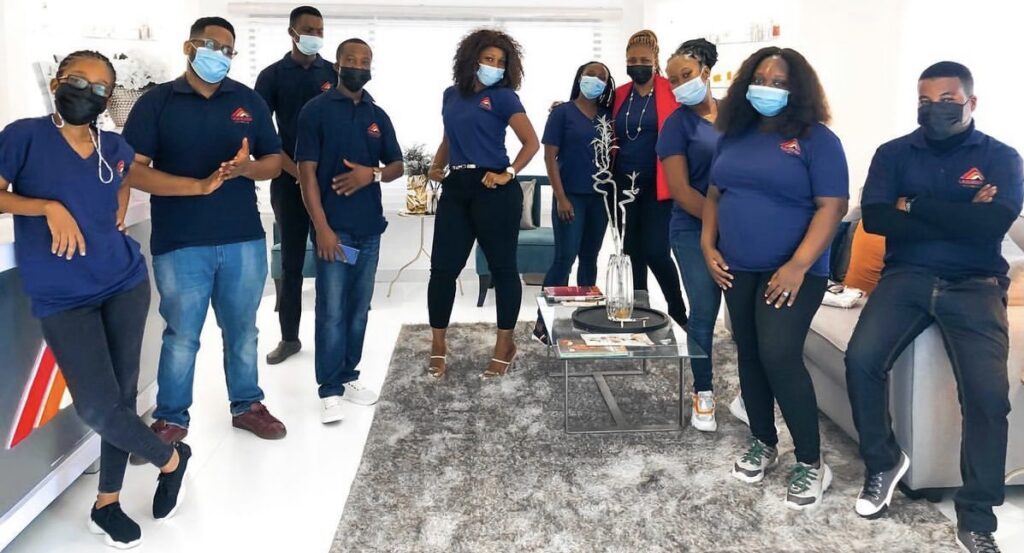
Here at BiL it is so important to us that we provide you with information you can trust, straight from the experts. So, we have teamed up with Laserderm Clinics to provide a series of educative posts and video content about Hyperhidrosis (hope you’re following us on Instagram, @BeautyInLagos). I can’t wait to share my treatment journey with you, but first things first, I think we should start-off by understanding what exactly Hyperhidrosis is.
WHAT IS HYPERHIDROSIS?
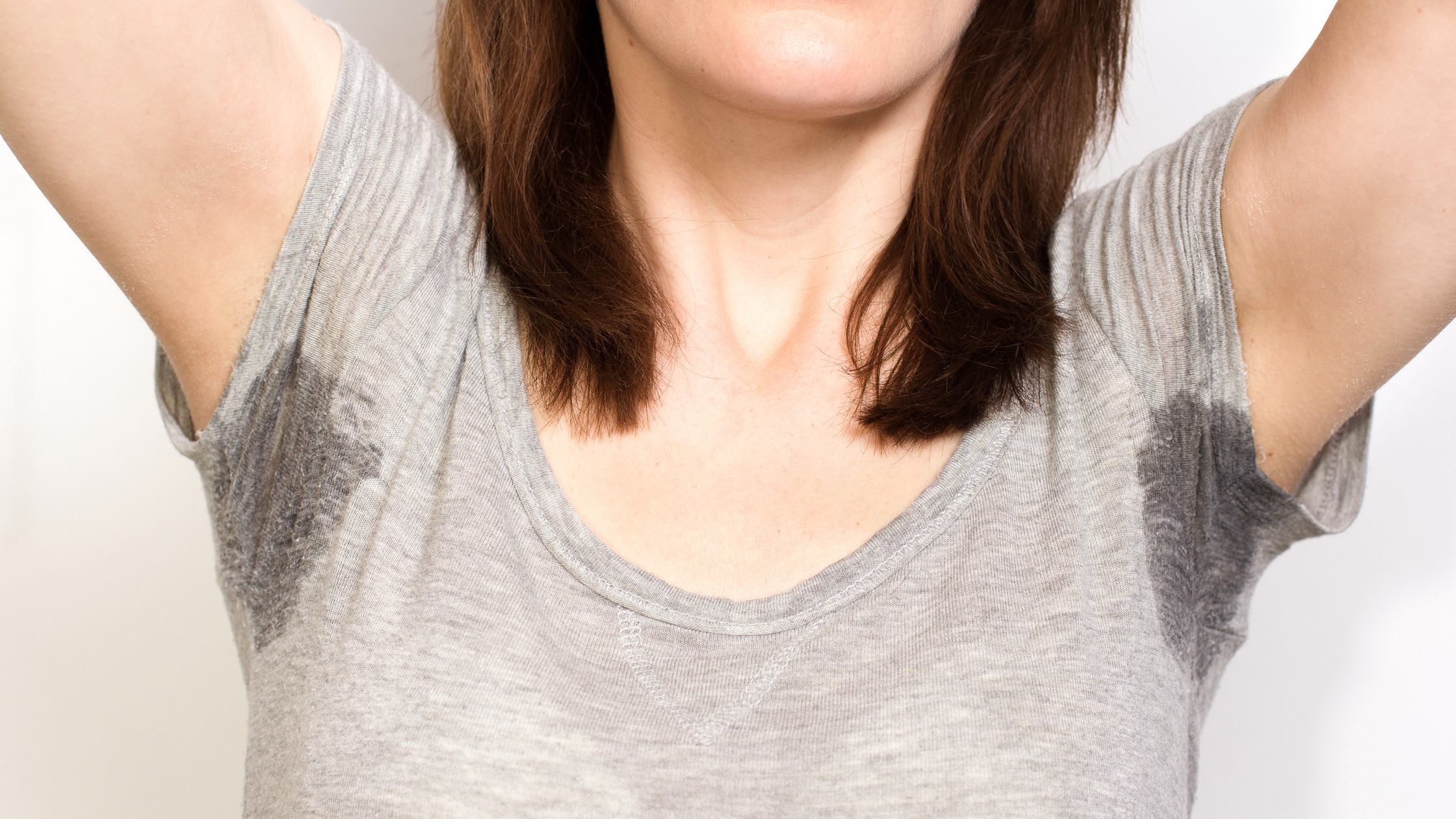
Hyperhidrosis is a condition characterized by excessive, uncontrollable sweating. This type of sweating can affect one specific area or the entire body. The excessive sweating associated with hyperhidrosis is normally most active in the hands, feet, armpits, and the groin because of their relatively high concentration of sweat glands.
Everybody sweats. It is an important part of the body’s cooling system to keep from overheating. A lot of things can cause sweating: hot weather, exercise, spicy foods, irregular room temperature or even anxiety. Sweat can also be caused by a fever or stressful situations.
Normally, sweating serves its purpose quickly by cooling down the body and bringing it to it’s normal state. However, when one experiences continued and excessive sweating, especially in the palms, feet, scalp, underarms, or face, even in cool weather, the person could have a medical condition known as Hyperhidrosis.
Although not life-threatening, for some, hyperhidrosis symptoms are so severe that it becomes embarrassing, causing discomfort or anxiety. Career choices, free time activities, personal relationships, self-image, and emotional well-being may be affected causing psychological trauma.
SIGNS & SYMPTOMS
The common signs & symptoms of hyperhidrosis may include:

- Clammy or wet palms of the hands
- Clammy or wet soles of the feet
- Frequent sweating
- Noticeable sweating that soaks through clothing
People with hyperhidrosis may experience the following:
- Irritating and painful skin problems, such as fungal or bacterial infections
- Concerns about having stained clothing
- Reluctance in making physical contact
- Self-consciousness & social withdrawal, which could lead to depression
- Difficulty selecting jobs/employment where physical contact is required
- Spending a large amount of time daily dealing with sweat, such as changing clothes, wiping, placing napkins or pads under the arms, washing, wearing bulky, or dark clothes
- Concerns of body odour.
TYPES OF HYPERHIDROSIS
- Primary Hperhidrosis: has no distinct medical cause and may be present from birth, or develop later in life. However, most cases of excessive sweating tend to start during a person’s teenage years so there may be a genetic link.
- Secondary Hyperhidrosis: caused by a medical condition such as diabetes, an infection, or hormonal changes, or possibly as a result of medication.
Several Causes of secondary hyperhidrosis include:
- Spinal cord injury
- Alcohol abuse
- Anxiety
- Diabetes
- Gout
- Heart Disease
- Obesity
- Pregnancy
- Parkinson Disease
- Respiratory failure
- Shingles
- Hyperthyroidism
- Some cancers, such as Hodgkin’s disease
- Some infections – Malaria, TB(Tuberculosis), HIV
- Substance abuse
PARTS/AREAS OF THE BODY THAT CAN BE AFFECTED
- The armpits (axillary hyperhidrosis)
- The face
- The groin area
- The palms
- The soles
- The area under the breasts
These happen because overactive nerves get the sweat glands working even when they do not need cooling.
TREATMENT
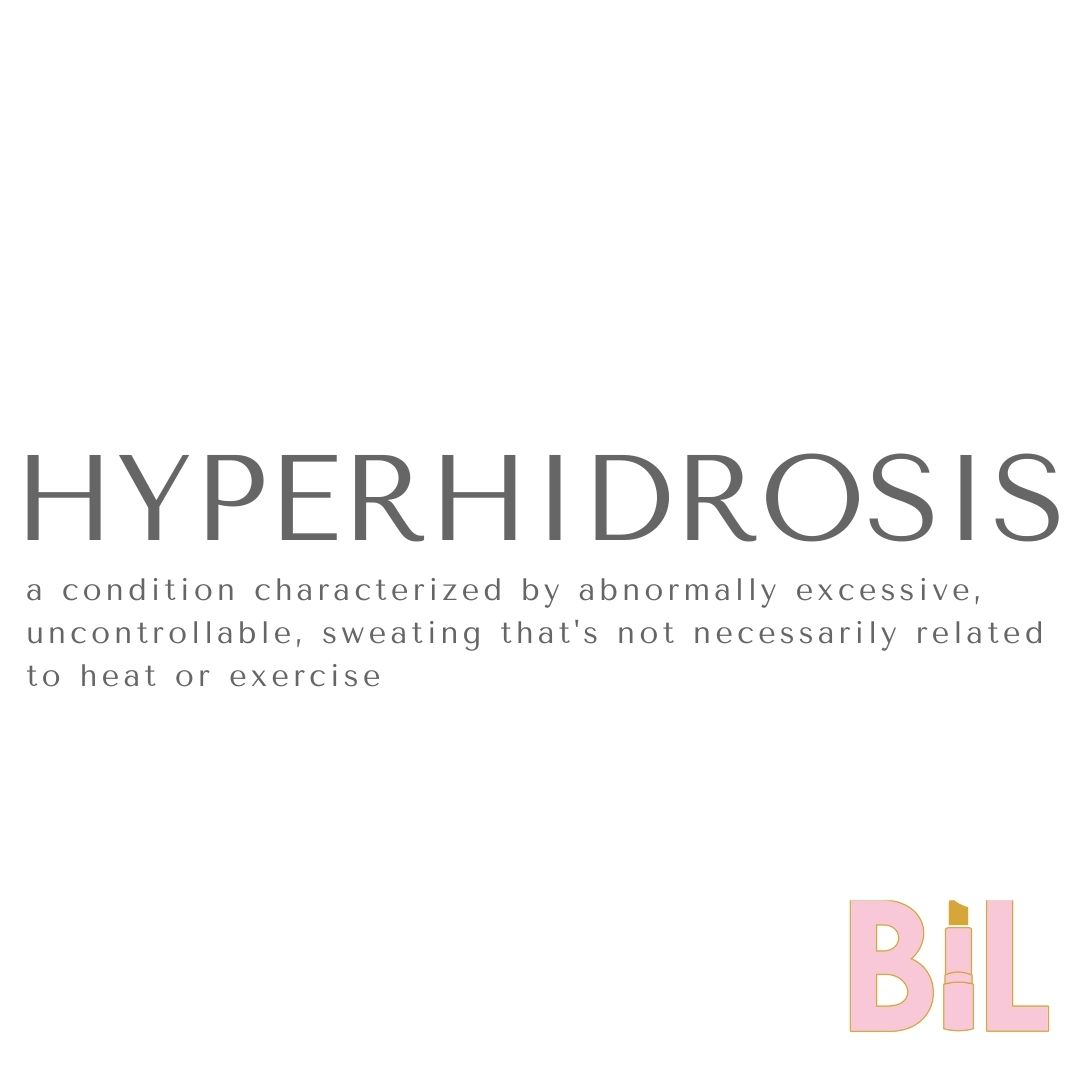
The biggest challenge in treating hyperhidrosis is the significant number of people who do not seek medical advice, either due to embarrassment or because they do not know that effective treatment exists. Fortunately, there are several options which can treat symptoms
Recommended treatments for Hyperhidrosis include:
- Prescription antiperspirant
- Prescription creams that that contain glycopyrrolate
- Nerve-blocking medications: some oral medications block the chemicals that permit certain nerves to communicate with each other in the body
- Antidepressants
- Botulinum toxin injections also known as Botox.
To read about my Botox treatment for Hyperhidrosis, click here: REVIEW: BOTOX TREATMENT FOR HYPERHIDROSIS

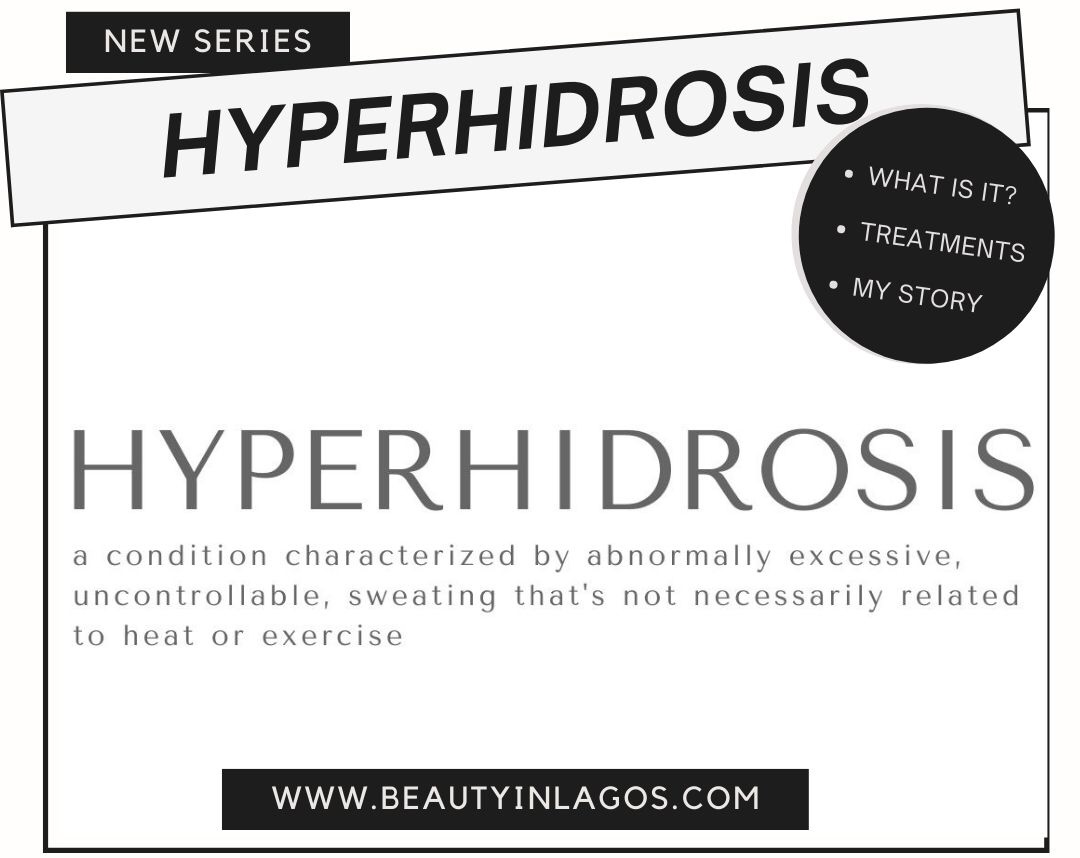
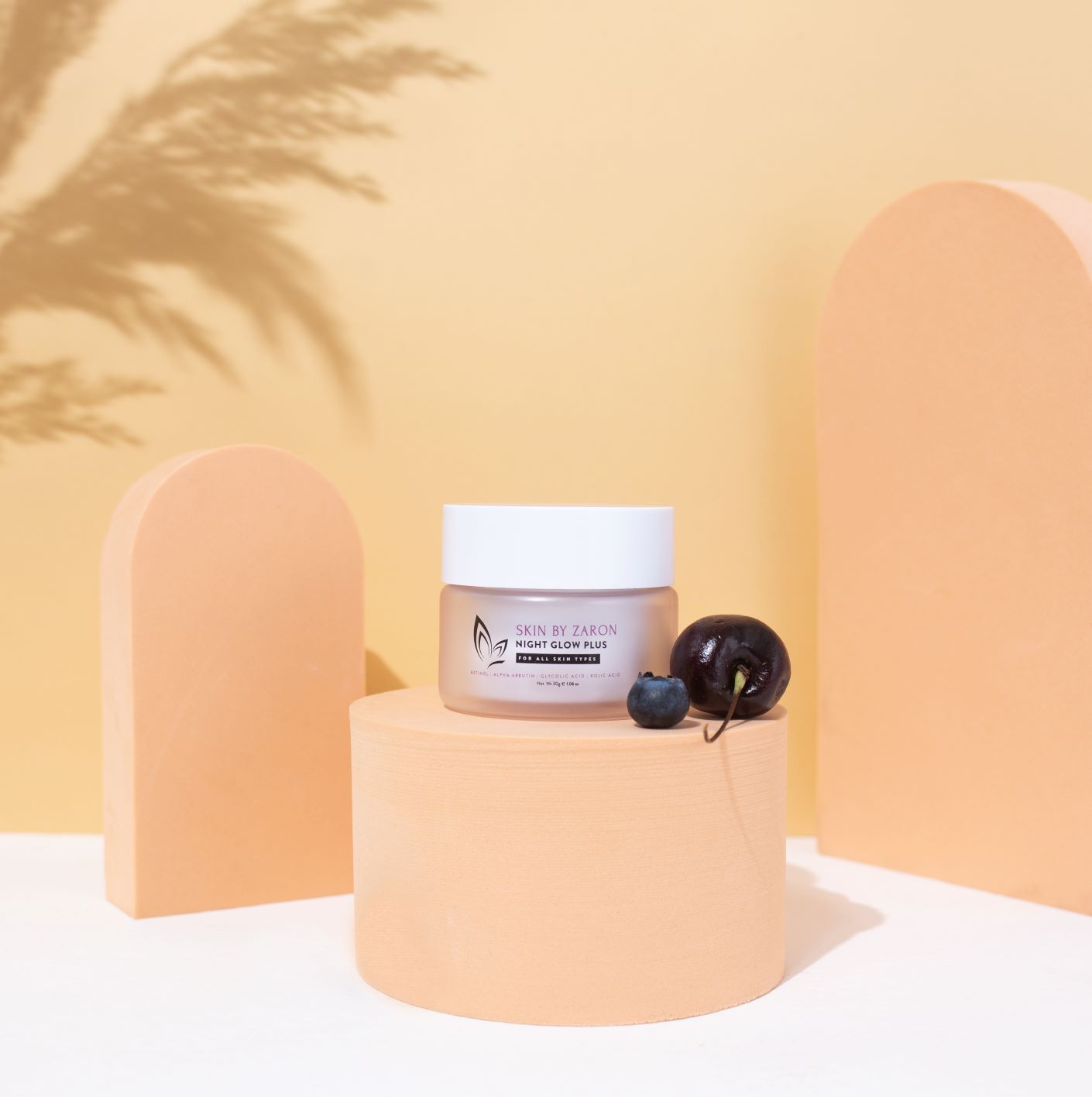


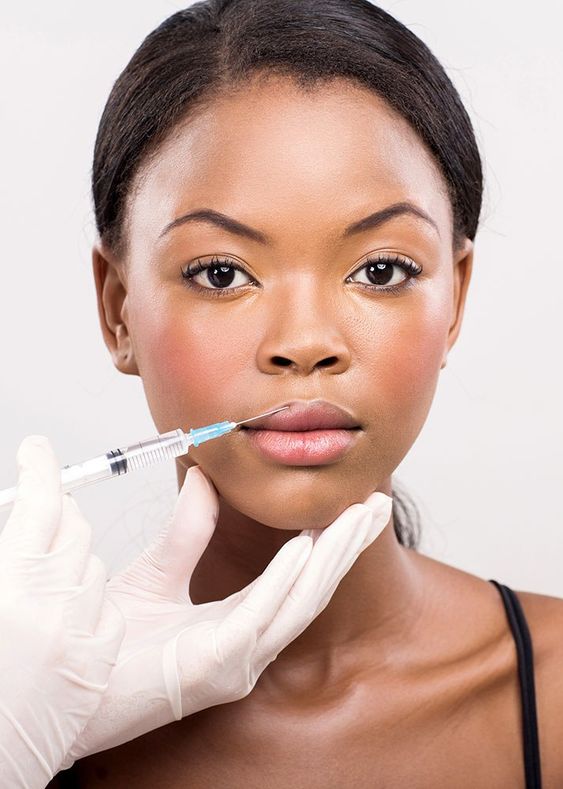
2 Comments
Motolani
3 years agoHi! Couldn’t have come across this article at a better time, do you have any recommendations as to where I can treat axillary hyperhidrosis in Lagos? Thankyou so much
BiL
2 years agoHello, thanks so much for reading. The next post in the series, which is linked above, details her review of the Botox treatment she received at Laserderm Clinics here in Lagos.